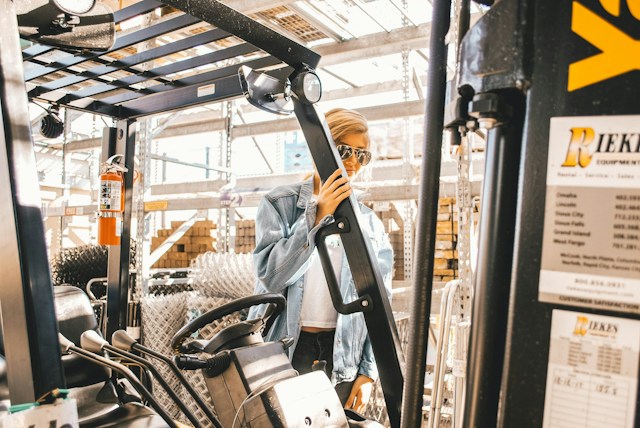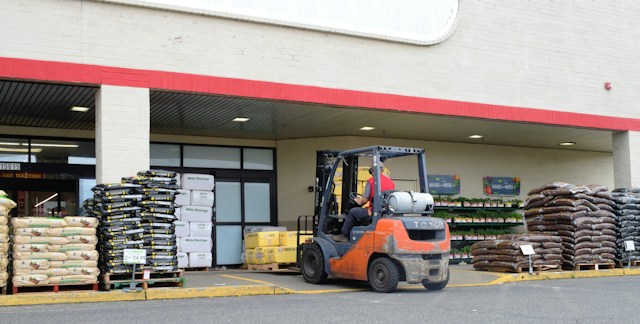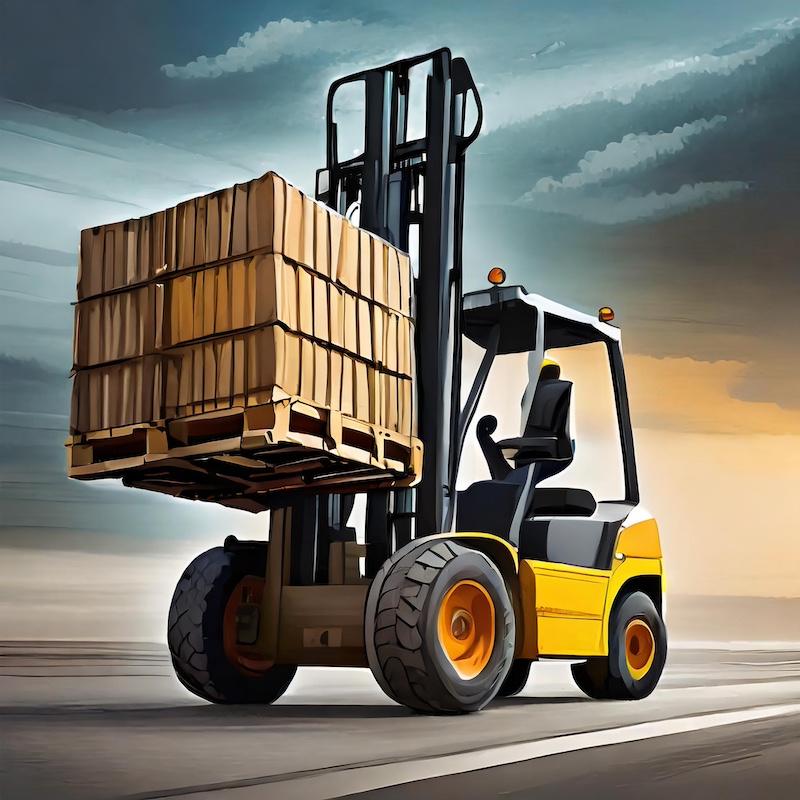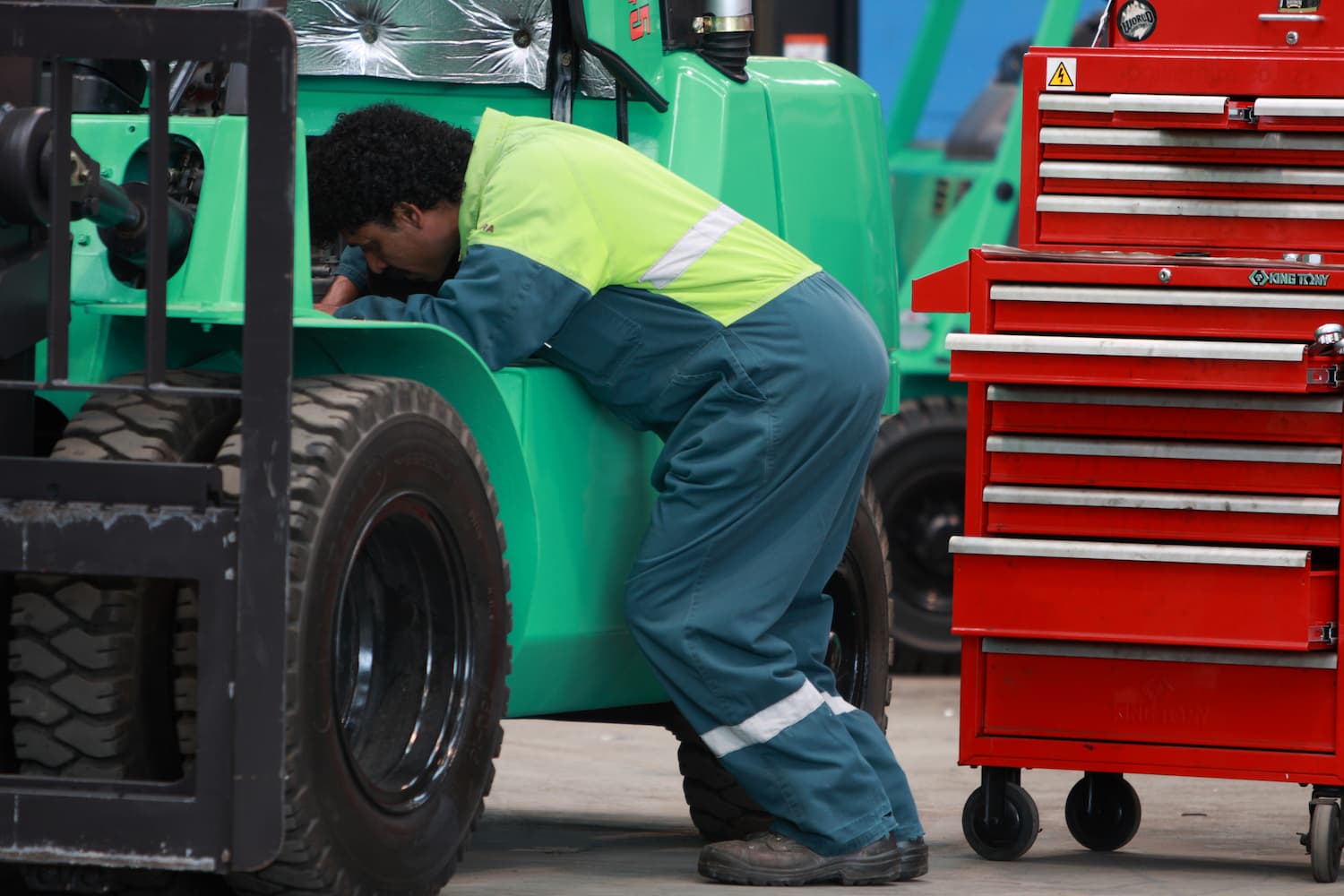In New Zealand, operating a forklift requires individuals to undergo a certification process to ensure they possess the necessary skills and knowledge to handle these powerful machines safely.
This certification is not only a legal requirement but also a crucial step toward building a successful career in various industries.
In this guide, we’ll walk you through the process of getting forklift certified in New Zealand, covering paperwork, practical tests, and essential tips to help you prepare.
Understanding the Requirements: Paperwork and Eligibility
Before diving into the certification process, it’s crucial to understand the eligibility requirements and necessary paperwork. To be eligible for forklift certification in New Zealand, individuals must meet specific criteria:
- Age Requirement: You must be at least 18 years old to operate a forklift in New Zealand. This age restriction ensures that operators are mature enough to handle the responsibilities associated with operating heavy machinery.
- Driver’s License: Possession of a valid New Zealand driver’s license is a fundamental requirement. At a minimum, you should hold a learner’s license, however, be aware, that you must have a full license to pass with an F endorsement, allowing you to drive a forklift along public roads. Ensure that your driver’s license is up to date before initiating the certification process.
- Physical and Mental Fitness: Operating a forklift requires physical and mental fitness. It’s essential to be in good health and possess the mental capacity to handle the responsibilities associated with forklift operations safely.
Tips:
- Preparation for the Learner’s License: If you don’t already have a driver’s license, start by obtaining a learner’s license. This is a foundational step that will pave the way for the forklift certification process.
- Stay Physically Fit: Regular exercise and maintaining good health will contribute to your overall well-being, ensuring you meet the physical requirements for operating a forklift.
Enrolling in a Forklift Certification Course
Once you meet the eligibility criteria, the next step is to enrol in a certified forklift training course. These courses are conducted by registered training organisations (RTOs) and cover both theoretical and practical aspects of forklift operation.
During the training, participants can expect to cover:
- Forklift Safety Procedures: Understanding and implementing safety measures is paramount. This includes guidelines for the safe operation of forklifts, risk assessment emergency protocols, and identifying common forklift hazards in the workplace.
- Equipment Operation and Controls: Familiarizing yourself with the various controls and functionalities of different forklift models is a key component of the training. This knowledge ensures that operators can confidently and efficiently handle the machinery.
- Load Handling Techniques: Learning proper techniques for lifting, transporting, and stacking loads of different shapes and sizes is essential to prevent accidents and ensure the safety of both the operator and others in the vicinity.
Tips:
- Research and Choose a Reputable Provider: Take the time to research different training providers. Look for accredited organizations with experienced instructors who can provide comprehensive and quality training.
- In Waikato, AGOGE is a well-known and established training company, however, there are many forklift license training centres across New Zealand.
- Active Participation: Actively engage in both theoretical and practical aspects of the course. Ask questions, seek clarification, and participate in discussions to enhance your learning experience.

Completing the Paperwork
In order to begin the course, you may need to bring the following information along for your instructor to add to the database, to confirm your eligibility and process your certification.
The paperwork includes:
- Application Form for Certification: Completing the application form is the initial step. This document typically includes personal details, contact information, and a declaration of your eligibility.
- Proof of Identity and Age: Providing valid identification, such as a passport or birth certificate is essential. This ensures that the certification process is conducted with accurate and verified information.
- Medical Certificate: A medical certificate is often required to confirm your physical fitness for forklift operation. This certificate may be obtained from a certified medical professional.
Tips:
- Thoroughly Review Course Materials: Ensure that you thoroughly review the materials provided during the training course. Understanding key concepts will significantly contribute to your success in the written test.
- Prepare Documentation in Advance: Collect all necessary documents, including proof of identity and the medical certificate, well in advance to streamline the application process.
The Forklift Certification Theory Test – Multi-Choice
The theory test for forklift certification in New Zealand is a crucial step in ensuring operators possess the foundational knowledge required for safe and efficient forklift operation.
This written examination delves into essential topics such as forklift safety protocols, equipment controls, load-handling techniques, and emergency procedures.
Aspiring forklift operators must demonstrate their understanding of regulatory guidelines and industry best practices through a series of questions that evaluate their comprehension of theoretical concepts.
Success in the theory test not only validates an individual’s grasp of critical information but also contributes significantly to creating a safer work environment.
Some questions that may be included in the theory test may include:
- What procedure must you follow when the load on your fork obscures your view to the front?
- Dismount, check that the way is clear, and then drive slowly forward sounding the horn.
- Travel in reverse looking in the direction of travel.
- Raise the load so that you can see under it.
- What action do you take should the brakes fail on your lift truck?
- Jump clear.
- Lower the forks to the ground.
- Use the gear change to attempt a stop.
- At what speed should you normally drive your lift truck?
- As fast as the lift truck will allow.
- At a speed consistent with the type of load and general working conditions/rules.
- At whatever speed suits the operator.
- What endorsement must an operator have to drive a lift truck on a public road?
- R
- P
- F
These are some of the questions that may appear in the exam, however, be sure to take a few practice tests before the course, to make sure you are confident and fully grasp the theory behind forklift operation.
Acing the Practical Forklift Certification Test
The practical test is the final stage of the forklift certification process. It involves a practical demonstration of your ability to operate the forklift safely and efficiently. An assessor evaluates your performance based on predetermined criteria.
The practical test includes:
- Pre-Operational Safety Check: Demonstrating your ability to conduct a thorough pre-operational safety check is a critical component of the practical test.
- Maneuvering the Forklift Through a Course: The course typically includes various elements, such as turns, stops, and reversing. Operators are evaluated on their ability to navigate these elements with precision.
- Load Handling Techniques: Properly handling and stacking loads, as well as ensuring stability during the process, are key aspects of the practical test.
- Response to Simulated Emergencies: The ability to respond effectively to simulated emergency situations, such as sudden stops or equipment malfunctions, is assessed during the practical test.
- Emergency Shutdown Procedures: Participants are trained on how to respond to simulated emergency situations, including the correct procedures for shutting down the forklift safely.
Tips:
- Focused Execution: Stay calm and focused during the practical test. Apply the skills and techniques you’ve learned throughout the training process.
- Repeat Specific Maneuvers: Practice specific maneuvers repeatedly to enhance your skill and precision. This repetition builds muscle memory and confidence in your ability to handle the forklift.
- Seek Feedback: Actively seek feedback from instructors during practical sessions. Constructive criticism and guidance will help you identify areas for improvement and refinement.

Benefits of Obtaining Your Forklift License: Beyond Certification
Congrats! Now that you’ve successfully obtained your forklift certification, let’s explore the key benefits that come with holding a forklift license in New Zealand.
Access to Higher-Paying Jobs:
- Forklift-certified individuals are in high demand across various industries. Holding a forklift license opens doors to well-paying jobs in warehouses, logistics, and manufacturing.
NCEA Credits and Educational Opportunities:
- Achieving a forklift license can contribute to National Certificate of Educational Achievement (NCEA) credits. This not only enhances your employability but also provides a foundation for further education and training.
- In addition to this, many high schools are happy to arrange forklift certification courses for students if they inquire about them – seek out your school’s careers room and talk to an organiser about getting your certification
Specialized Career Paths:
- With a forklift license, you can pursue specialized career paths within industries such as construction, agriculture, and forestry. This diversification can lead to exciting and rewarding opportunities.
Enhanced Workplace Safety Awareness:
- Forklift certification not only equips you with the skills to operate a forklift safely but also instills a heightened awareness of workplace safety. This can benefit you in various roles, promoting a culture of safety within your workplace, and your boss will appreciate you having the extra training.
Increased Job Mobility:
- Holding a forklift license increases your job mobility, allowing you to explore different industries and positions. This adaptability can be a valuable asset in a dynamic job market.
In conclusion, obtaining your forklift certification in New Zealand is a significant step toward a rewarding and secure career. The process involves a combination of theoretical learning and practical training, and the benefits extend beyond the certification itself.
Whether you’re aiming for higher-paying jobs, pursuing educational opportunities, exploring specialized fields, or looking to buy or rent a forklift, a forklift license opens doors to a world of possibilities. Congratulations on taking this important step in your career journey!


